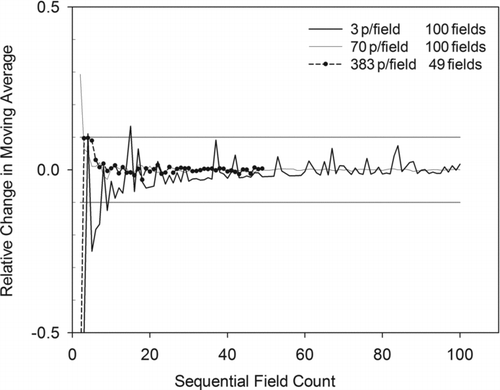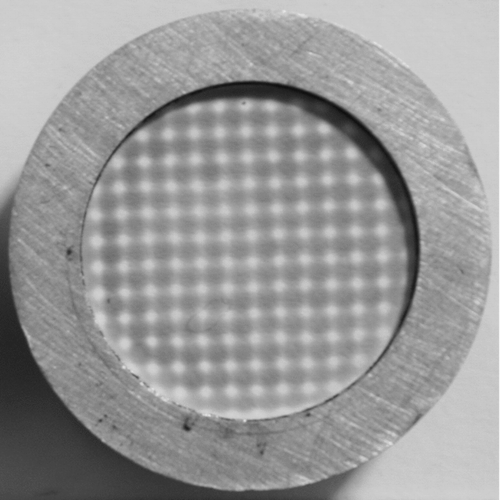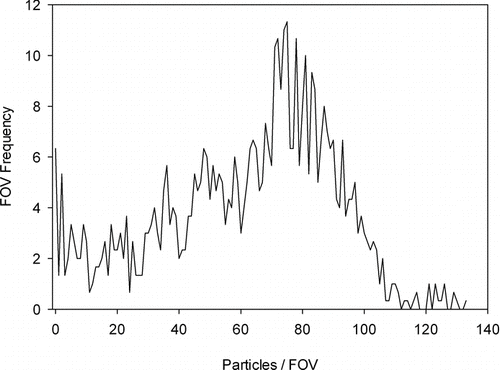Figures & data
FIG. 2 Operation principle of CCSEM: (a) process of particle sizing and counting using a BSED; the sample and the stage are positioned to scan for particles at the BSED's field of view (FOV); and (b) three steps for locating the field and for sizing and counting particles: (1) stage moves to randomly selected or predetermined FOV; (2) beam is coarsely rastered across FOV; and (3) particles are identified by using the RCA, which draws 16 chords though the center of the particle for computing particle morphology.
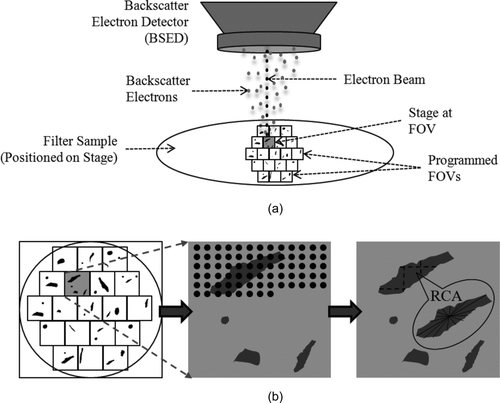
FIG. 3 Low magnification SEM images of particles clustered about individual MPAS magnet as (a) a supermicron Fe3O4 powder sample and (b) an MPAS sample of Fe3O4 particles. Borders show collection boundaries of a cluster collected by single magnet with dark areas as magnet's corner.

FIG. 4 Contour plots of particle number per field, and corresponding CMD for two separate clusters measured by the sequential grid counting method, with a 7 × 7 grid totaling 49 fields. Clusters are paired as number per field and particle size: (a) Cluster 1 (number/field); (b) Cluster 1 (CMD); (c) Cluster 2 (number/field); and (d) Cluster 2 (CMD).

FIG. 6 Size distributions and %CV of the sequential grid and random methods for 49 fields of the same cluster.
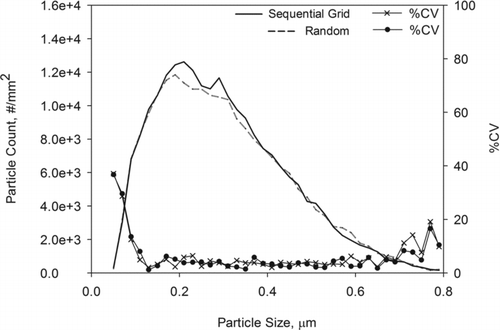
TABLE 1 Size distribution of aerosol deposited across a portion of the MPAS substrate with a diameter of 15 mm, as a function of the number of fields counted
FIG. 7 Relative change in the moving average of particles per field for different particle loadings as a function of the sequence that the fields (0.0023 mm2 each) were counted by using the random method (N = 10): 3 particles per field (A = 0.23 mm2); 70 particles per field (A = 0.23 mm2); and 383 particles per field (A = 0.88 mm2).
